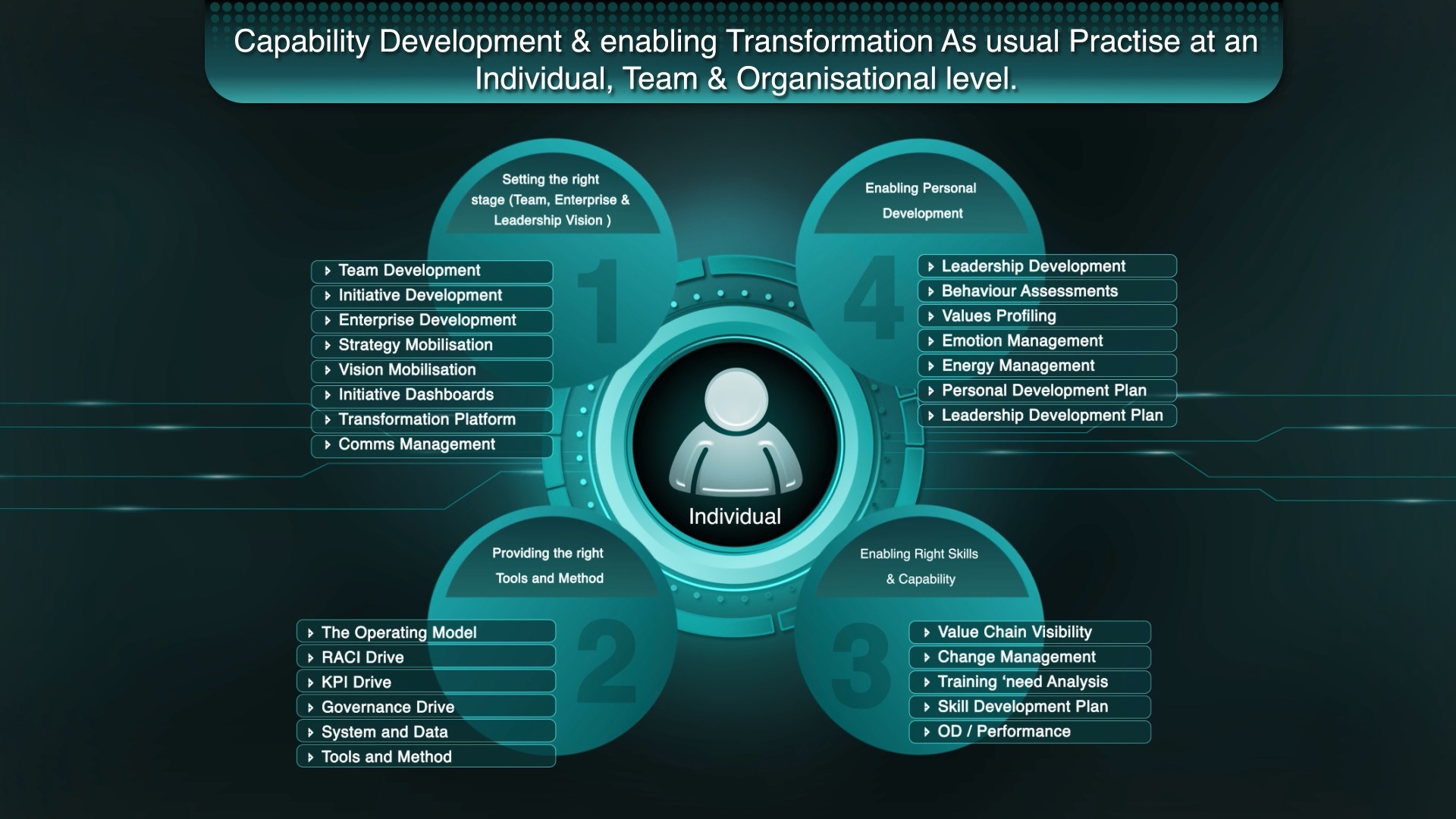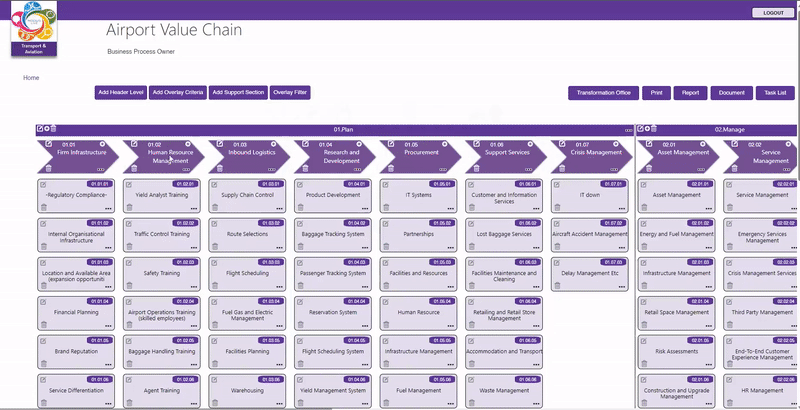Transport and Aviation – Enterprise Business Transformation
An Introduction To Our Transport and Aviation Platform
Modus Business Transformation Core Modules
Building, Driving and Sustaining your Business Transformation and embedding a 'Transformation As Usual' platform.
*01 - Business Model Management - Manage and Adapt
Transform your transport and aviation enterprise with the Modus Business Model Management Hub. Embrace change, drive innovation, and achieve sustainable success.
The Business Model Management Hub within the Modus Enterprise Transformation Platform (ETP) is an essential tool for transport and aviation enterprises aiming to navigate and thrive in today's dynamic market. Here's why it's crucial and how it benefits your business:
Key Features:
• Set Up and Analyze Business Models: Establish and evaluate both current
and future business models, covering markets, customers, products,
services, and more.
• Adapt and Innovate: Continuously adapt to market changes and innovate to
stay ahead of competitors.
• Holistic View: Gain a comprehensive view of your business landscape to
make informed strategic decisions.
• Centralized Management: Integrate all aspects of business transformation
into a single platform for streamlined management.
• Business Transformation Survey: Assess the current state of your business
and identify key areas for improvement.
• Transformation Strategy Hub: Develop and execute a robust transformation
strategy aligned with your business objectives.
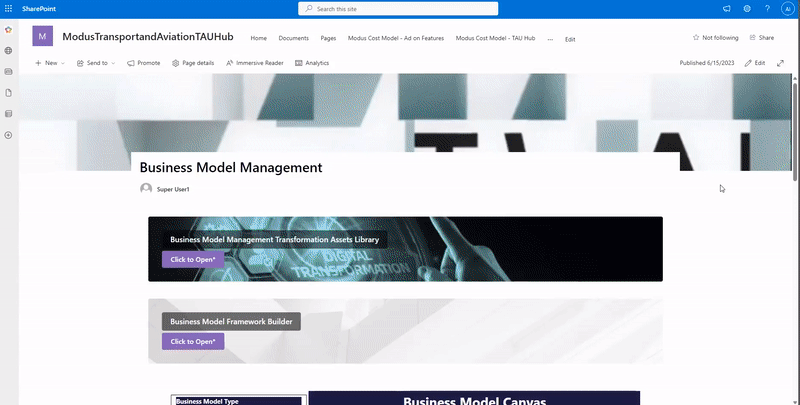
Importance:
• Business Model Management: Design, manage, and adapt your business
models to ensure relevance and competitiveness.
• Transformation Strategy Hub: Plan and implement strategic initiatives
seamlessly, linking business models with operational execution.
• Comprehensive Analysis Tools: Utilize advanced tools to analyze markets,
customer segments, and product portfolios effectively.
Benefits:
• Strategic Alignment: Align business models with overall strategic goals to
ensure coherence and focus.
• Improved Market Position: Strengthen your market position by continually
refining and adapting your business models.
• Increased Competitiveness: Stay competitive by leveraging advanced tools
and methodologies to innovate and improve.
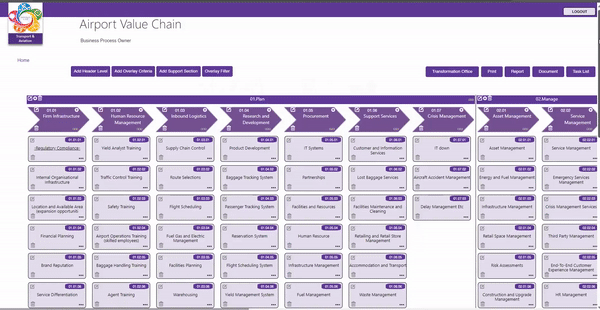
Benefits:
• Improved Efficiency: Streamline operations and eliminate bottlenecks in your
value chain.
• Better Communication: Use visual tools to clearly communicate value chain
components and strategies.
• Increased Competitiveness: Stay ahead in the market by continuously
refining and optimizing your value chain.
*02 - The Value Chain Modeler - Manage and Adapt
Transform your transport and aviation enterprise with the Modus Value Chain Modeler. Gain insights, plan strategically, and drive sustainable growth.
The Value Chain Modeler in the Modus Enterprise Transformation Platform (ETP) is an indispensable tool for transport and aviation enterprises. It provides a comprehensive understanding of your entire business model and value chain, enabling effective planning and growth.
Key Features:
• End-to-End Value Chain Analysis: Gain a thorough understanding of your
complete business model and all its touch-points.
• Articulate and Illustrate: Clearly define and visually represent each
component of your value chain for better communication and understanding.
• Strategic Planning: Plan and strategize your business growth with detailed
insights into your value chain.
Importance:
• Value Chain Analysis: Identify and analyze every link in your value chain to
pinpoint strengths and areas for improvement.
• Value Chain Surveys: Conduct surveys to gather insights and feedback from
various stakeholders, ensuring comprehensive analysis.
• Target Operating Model: Develop a robust target operating model to align
your value chain with your business goals.
*03 - The Operating Model - Organize and Sustain
Transform your transport and aviation enterprise with the Modus Operating Model. Organize, sustain, and excel in your operational excellence.
The Operating Model within the Modus Enterprise Transformation Platform (ETP) is essential for organizing and sustaining your business operations. It provides a structured approach to defining, capturing, and visualizing your operational processes and activities.
Key Features:
• Organize and Sustain Operations: Define and maintain a comprehensive
view of your operational processes and activities.
• Living Knowledge Hub: Manage a dynamic process knowledge hub, also
known as the Ways of Working Centre of Excellence.
• Training Guide: Utilize multiple operating models as ongoing training guides
to ensure continuous improvement and adaptation.
Importance:
• TOM and Operating Model Design: Develop and implement a Target
Operating Model (TOM) that aligns with your business goals.
• Operating Model Components: Identify and manage the essential
components of your operating model.
• Product and Services Value System Design: Design and optimize the value
system for your products and services.
• Customer Experience Design (CX): Enhance customer satisfaction through
meticulous customer experience design.
• Business Role and Skill-Based Design: Define and align business roles and
skills to operational needs.
• Process Support Office: Establish a support office to manage and sustain
operational processes.
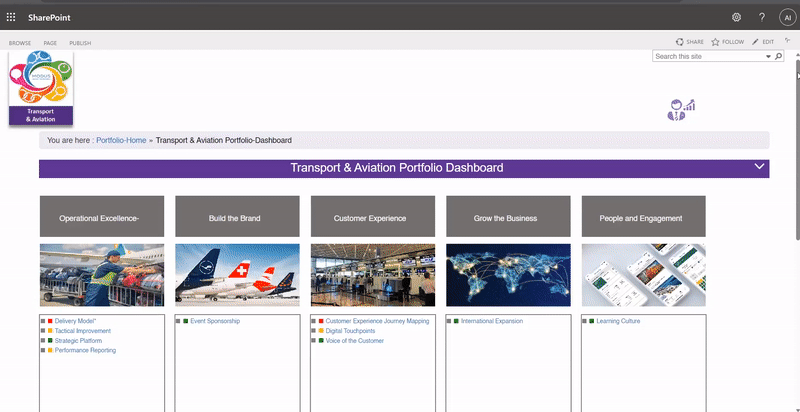
Benefits:
• Streamlined Transformation: Achieve smooth and efficient transformation
with structured methods and templates.
• Holistic Management: Cover every aspect of transformation from strategy to
execution.
• Enhanced Coordination: Ensure all transformation activities are centrally
managed and connected.
*04 - The Transformation Assets and Portfolio Module - Discover and Transform
Discover and transform your transport and aviation enterprise with the Modus Transformation Assets and Portfolio Module. Execute your vision with precision and achieve lasting success.
The Transformation Assets and Portfolio Module within the Modus Enterprise Transformation Platform (ETP) empowers transport and aviation enterprises to successfully execute their transformation vision. This module offers a comprehensive library of pre-defined templates and methods, ensuring seamless and effective transformation.
Key Features:
• Execute Transformation Vision: Deploy a wide range of pre-defined
templates and methods to achieve your transformation goals.
• Comprehensive Management Offices: Utilize specialized management
offices for portfolios, pillars, initiatives, programs, and projects.
• Centralized and Connected Assets: Access a central repository of
transformation assets to streamline and connect all aspects of your
transformation efforts.
Importance:
• Portfolio Management Office: Oversee and manage all transformation
initiatives across the organization.
• Pillar/Initiative Management Office: Focus on specific strategic pillars and
initiatives for targeted transformation.
• Program Management Office: Coordinate and manage multiple
interrelated projects to achieve strategic objectives.
• Project Management Office: Ensure successful delivery of individual projects
with structured methodologies.
• Project Support Office (or Virtual PMO): Provide virtual support and
resources for project management tasks.
• Value Chain Analysis
• Business Model Analysis
• Transformation Strategy
• Transformation Mobilisation
• Planning Management
• Transformation Log Management
• Financial Management
• Communication Management
• Operating Model Management
• Process Design Management
• IT Design Management
• Build and Test Management
• Implementation Management
• Change Management
• Personal Development Assessments
• Training Management
• Organizational Design Management
• Transformation Review
• Optimization and Governance
*05 - Organizational Change Management - Unite and Thrive
Unite and thrive with the Modus Organizational Change Management module. Drive effective change, engage your workforce, and build a resilient organization.
The Organizational Change Management module in the Modus Enterprise Transformation Platform (ETP) is designed to ensure seamless adoption of change and foster a thriving organizational structure. It focuses on engaging and building pathways and skills down to individual roles and resources.
Key Features:
• Change Management Office: Centralize and streamline all change
management activities for effective oversight.
• Comms Management Office: Manage communication strategies to ensure
clear and consistent messaging.
• Organizational Design Management Office: Design and implement optimal
organizational structures.
• Leadership Development Practices: Develop strong leadership capabilities
to drive and support change.
• Change Workbench: Utilize tools and methodologies to manage and
execute change initiatives.
• Adoption and Course Correct: Monitor adoption progress and make
necessary adjustments to ensure success.
• Training and Launch Academy: Provide comprehensive training programs to
support the rollout and adoption of changes.
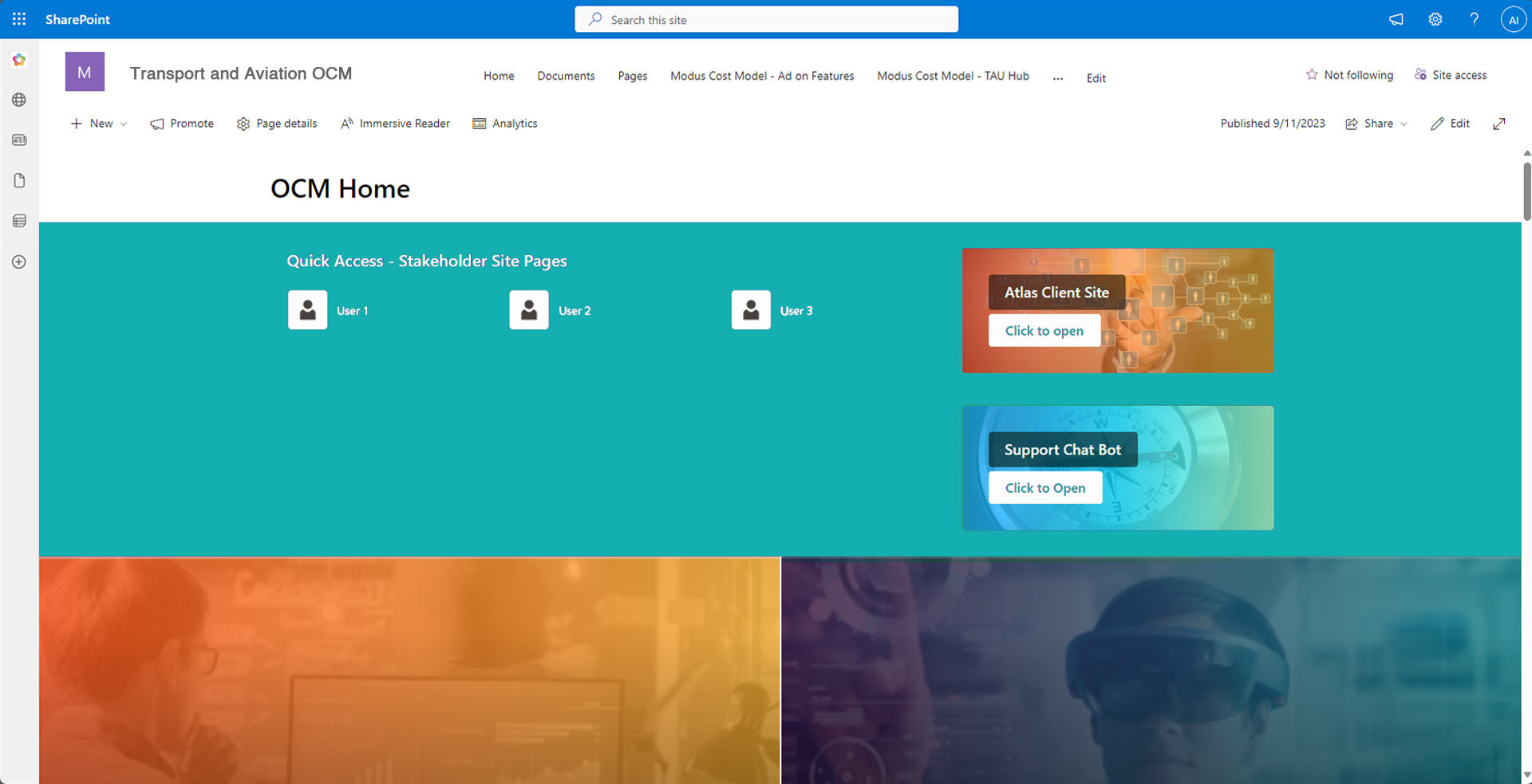
Importance:
• Unified Change Process: Create a unified approach to managing change,
ensuring consistency and alignment across the organization.
• Effective Communication: Ensure all stakeholders are informed and
engaged through effective communication strategies.
• Enhanced Leadership: Strengthen leadership capabilities to champion and
sustain change initiatives.
• Continuous Improvement: Monitor and adjust change processes to ensure
ongoing success and improvement.
Benefits:
• Seamless Change Adoption: Achieve smooth and effective adoption of
changes at all levels.
• Improved Organizational Structure: Build and maintain a strong, adaptable
organizational structure.
• Empowered Workforce: Enhance the skills and capabilities of your
workforce, enabling them to thrive in a changing environment.
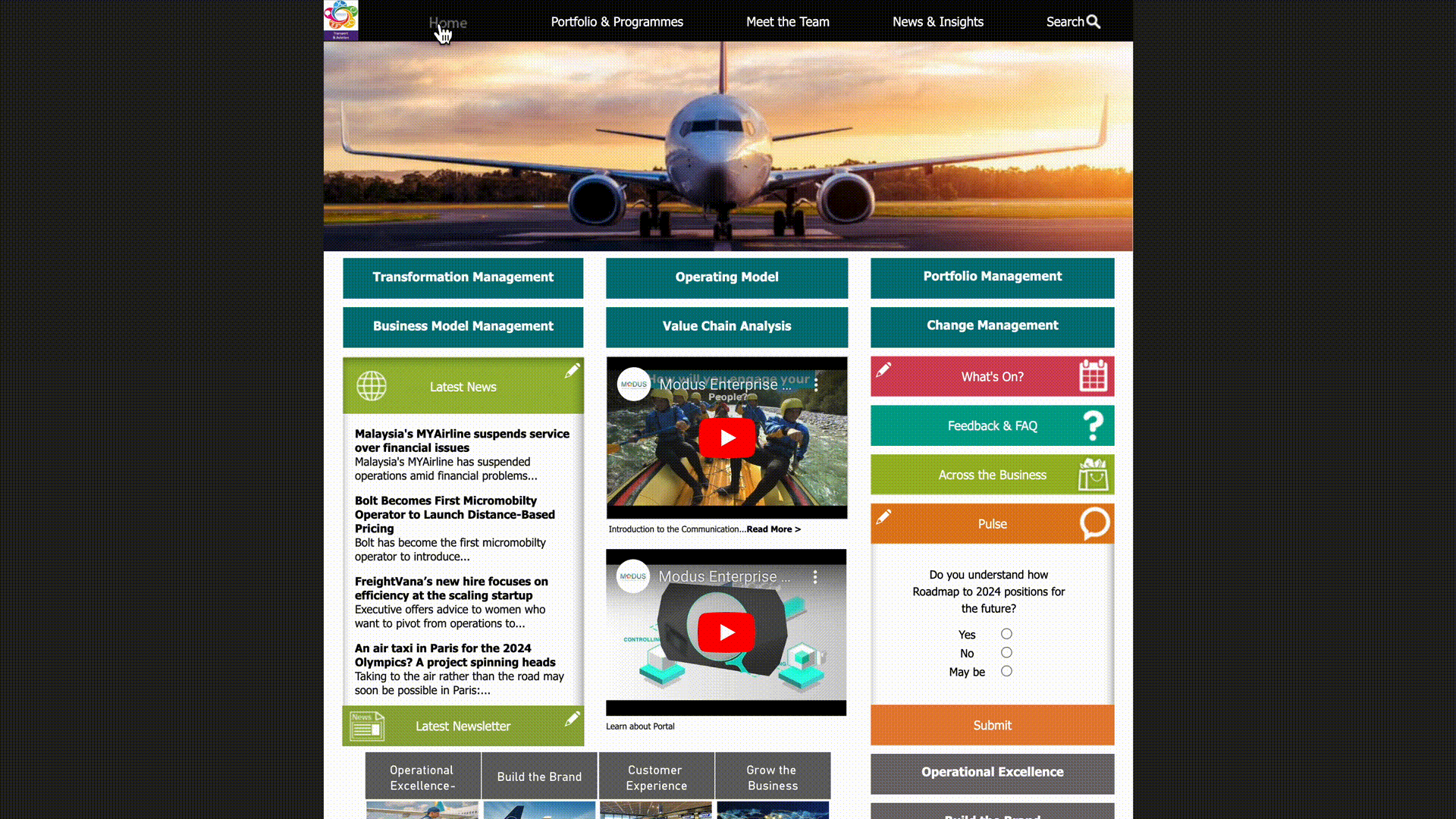
Importance:
• Enhanced Communication: Streamline and centralize communication to
ensure everyone is on the same page.
• Improved Collaboration: Facilitate better collaboration between
transformation and business teams.
• Timely Updates: Provide timely updates and alerts to keep stakeholders
informed and engaged.
• Feedback Mechanism: Use polls and surveys to gather valuable feedback
and insights from your team.
Benefits:
• Increased Engagement: Foster a more engaged and motivated workforce.
• Better Alignment: Ensure all teams are aligned with transformation goals and
timelines.
• Efficient Communication: Reduce communication gaps and enhance
information flow.
• Proactive Management: Stay ahead of issues with real-time alerts and
updates.
*06 - Engagement Hub - Share and Guide
Transform your transport and aviation enterprise with the Modus Engagement Hub. Centralize communication, enhance collaboration, and guide your team to success.
The Engagement Hub within the Modus Enterprise Transformation Platform (ETP) is essential for centralizing communication and fostering collaboration during transformation initiatives. It ensures that all stakeholders are informed, engaged, and aligned.
Key Features:
• Centralize Transformation Communications: Manage all transformation-
related communications in one place for easy access and consistency.
• Latest News: Keep everyone updated with the latest news and
developments.
• Poll Surveys: Gather feedback and insights from your team through regular
surveys.
• Transformation Team Areas: Dedicated areas for transformation teams to
collaborate and share information.
• Business Team Areas: Spaces for business teams to coordinate and align
with transformation efforts.
• Calendar Roadmaps: Visualize key milestones and timelines with calendar
roadmaps.
• Language Capability: Support for multiple languages to ensure clear
communication across diverse teams.
• Transformation and Change Alerting: Real-time alerts to keep everyone
informed about important updates and changes.
Transformation As Usual Capability Model
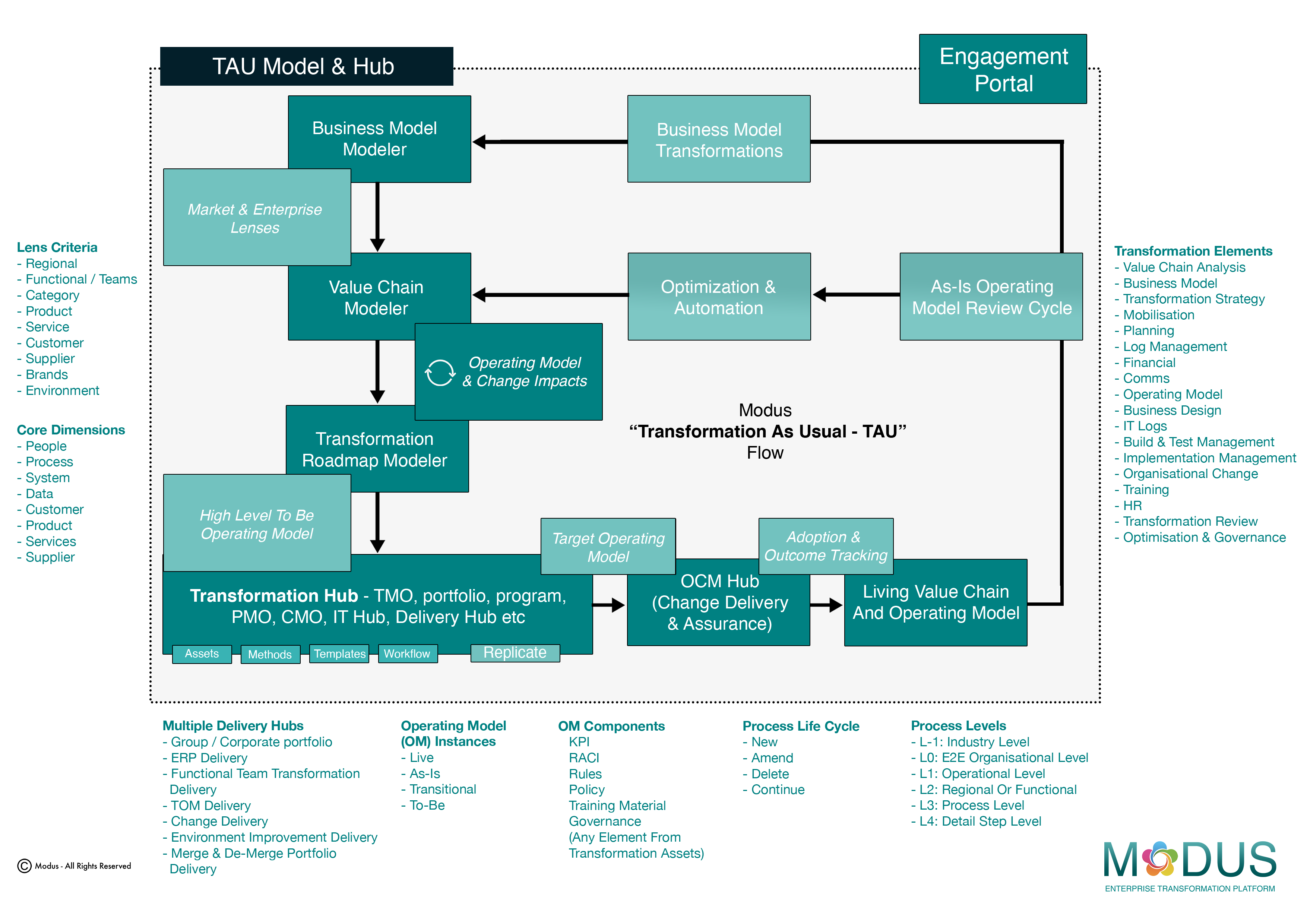
Individual and Team Capability Development
